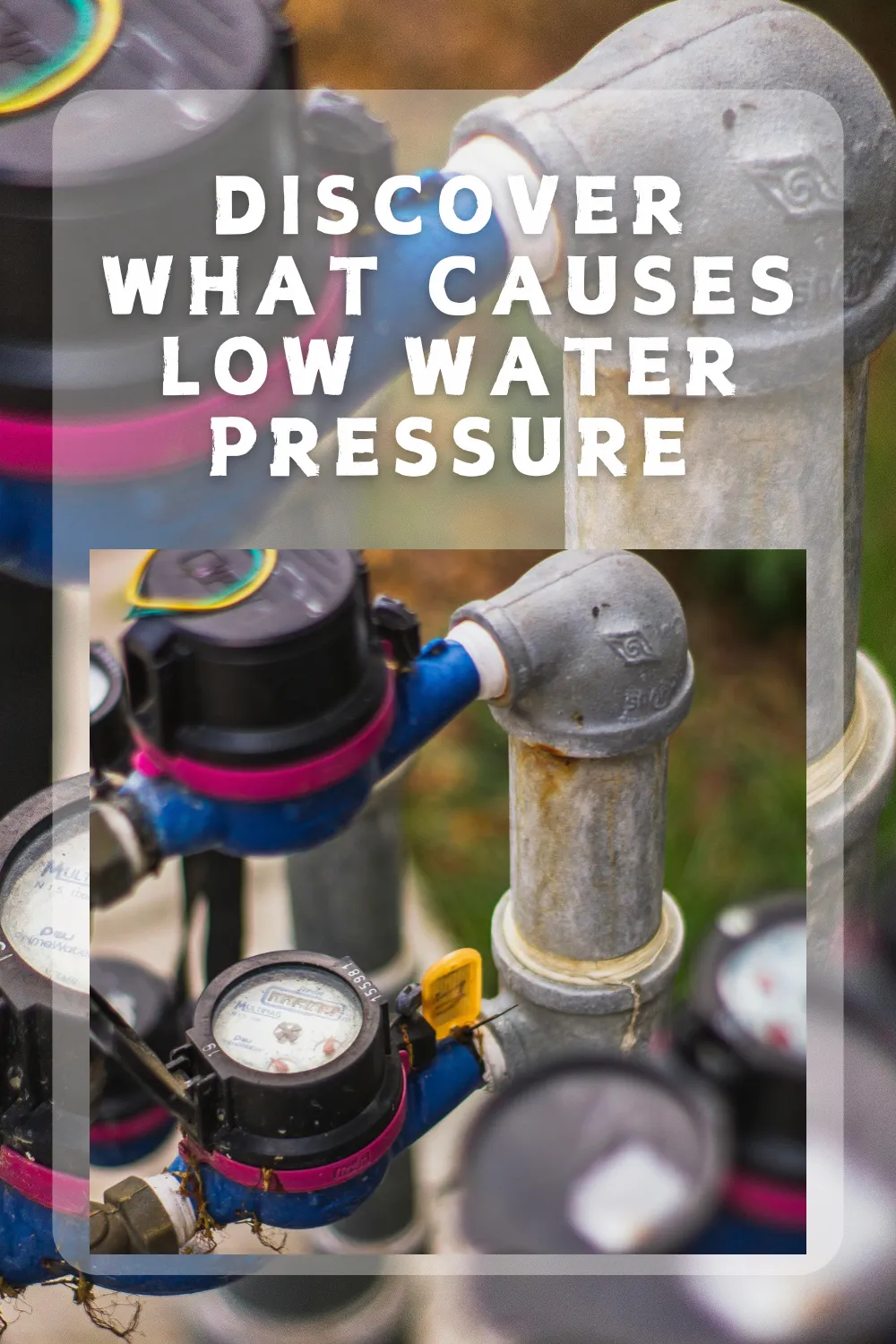
Simple Fixes for What Causes Low Water Pressure in Homes
"Low water pressure may start as a small inconvenience, but fixing it leads to big gains in comfort, efficiency, and peace of mind for every home." - Appliance Boss
Introduction
Water pressure isn’t just a convenience—it's essential for daily life. Soft showers, efficient dishwashing, and fast laundry cycles all depend on a consistent flow. When pressure drops, frustrations mount—weak dribbles from your showerhead, sinks that refuse to fill fast enough, and irrigation systems that sputter. Let’s explore how to fix it.
Why Water Pressure Matters for Everyday Comfort
Water pressure determines how well water moves through your pipes. Adequate pressure makes everyday tasks smoother and more enjoyable.
The Most Common Frustrations Homeowners Face
Drips instead of showers, endlessly slow sink fills, gardening struggles with lawn sprinklers—low pressure affects it all. Fixing it restores both function and peace of mind.

Understanding Water Pressure
What Is Water Pressure and How Is It Measured
Measured in PSI (pounds per square inch), water pressure indicates the force behind the flow. Standard gauges make testing straightforward.
The Ideal Water Pressure Range for Homes
Most homes run best between 45–60 PSI. Below that, pressure feels weak; much higher risks damage to fixtures.
High vs Low Pressure: Why Balance Is Key
Too much pressure can burst pipes; too little, and your water dribbles. The goal is balance for efficiency and protection.
Most Common Causes of Low Water Pressure in Homes
Mineral Buildup in Pipes and Fixtures
Hard water leaves mineral deposits inside pipes and valves, restricting flow over time.
Partially Closed or Broken Shut-Off Valves
If valves aren’t fully open—or are worn—they’ll limit water flow to your home.
Faulty Pressure Regulators
A malfunctioning pressure regulator can choke your system, reducing pressure throughout.
Corroded Plumbing Pipes in Older Homes
Galvanized pipes rust from within, narrowing passages and reducing water pressure.
Leaky Pipes and Hidden Water Damage
Even small leaks siphon off pressure before it reaches your faucets.
Clogged or Dirty Aerators and Showerheads
Mineral buildup inside aerators or showerheads can drastically cut flow.
Municipal Supply Issues or Local Water Restrictions
Sometimes the problem isn’t your pipes—it’s the city’s pressure or temporary restrictions in effect.
Poor Home Plumbing Design or Layout
Long runs, lots of angles, or undersized pipes can all restrict water flow.
Shared Water Lines with Neighbors (in Multi‑Unit Homes)
If your home shares a line with neighbors, high demand elsewhere can drain your pressure.
Room‑by‑Room Troubleshooting Guide
Kitchen Sink Low Pressure Fixes
Clean aerators, check supply valves, and inspect dishwasher or garbage disposal lines.
Bathroom Faucet and Shower Pressure Solutions
Soak fixtures in vinegar, check showerhead flow restrictors, and inspect for leaks.
Low Water Pressure in Laundry Areas
Ensure valves are open, hoses are free, and the washer isn’t blocked or restricted.
Outdoor Hose and Sprinkler Pressure Problems
Inspect hose connections, clean filters, and check municipal outdoor water service.
How to Identify the Root Cause
Running a Home Water Pressure Test
Attach a gauge to an outdoor spigot and note the PSI.
Checking for Visible Leaks or Corrosion
Inspect exposed pipes and fixtures for rust, stains, or drips.
Inspecting Valves and Meters for Blockages
Partially open valves or obstructions at the meter can severely affect pressure.
Using a Pressure Gauge to Measure PSI
Check at multiple points—indoor spigot, outdoor spigot, washer area—for discrepancies.
Comparing Hot vs Cold Water Flow
If only hot water is weak, the water heater or its pipes likely need attention.
Simple DIY Fixes for Low Water Pressure
Cleaning Faucet Aerators and Showerheads
Soak components in vinegar overnight to dissolve buildup.
Fully Opening Main Water Shut‑Off Valves
Ensure full flow from the main supply.
Adjusting or Replacing a Pressure Regulator
Turn screws for minor adjustments—or replace if it’s faulty.
Using Vinegar to Break Up Mineral Buildup
Run vinegar through fixtures and small pipes to clean them out.
Replacing Old or Clogged Fixtures
Swap out corroded or restricted faucets and showerheads.
Installing a Water Pressure Booster Pump
When all else fails, a booster pump can restore steady pressure throughout the home.
When to Call in a Professional Plumber
Low Pressure Affecting Multiple Fixtures
This often signals deeper plumbing or supply issues requiring an expert.
Leaks Inside Walls or Ceilings
Hidden leaks can cause damage and require repair by a pro.
Major Corrosion or Pipe Replacement Needs
Replacing galvanized or extensively corroded pipes requires professional service.
Recurring Issues After DIY Fixes
Persistent low pressure means a root cause wasn’t resolved—call a plumber.
Preventative Maintenance Tips
How to Keep Aerators and Fixtures Clean
Clean every 3–6 months to prevent buildup and maintain flow.
When to Flush Your Water Heater to Avoid Sediment
Annual flushes prevent sediment buildup that restricts hot water pressure.
The Importance of Regular Plumbing Inspections
Annual checks catch problems early—before they impact water pressure.
Why Seasonal Maintenance Checks Make a Difference
Heat, freezing, and water usage vary by season—check valves and fixtures accordingly.
Home Upgrades to Improve Water Pressure
Installing Modern, High‑Flow Fixtures
New fixtures often resist buildup and allow better flow.
Upgrading Old Galvanized Pipes
Replace these with modern PEX or copper for better flow and reliability.
Adding a Whole‑Home Water Filtration System
Filters reduce mineral buildup and protect pressure over time.
Smart Pressure Regulators for Consistent Flow
Digital regulators maintain optimal pressure without manual adjustment.
How Local Factors Affect Your Water Pressure
Hard Water and Mineral Content in Your Region
Water hardness directly contributes to pipe scaling.
Impact of Drought Restrictions or Municipal Work
Temporary water advisories or construction can reduce supply or pressure.
How Elevation and Water Source Location Matter
Homes uphill or far from the water source may inherently suffer from lower pressure.
Myths About Low Water Pressure Debunked
Why Bigger Pipes Don’t Always Mean Better Pressure
If valves or fixtures are restricted, larger pipes won’t help.
The Truth About DIY Pressure Boosters
Adding a pump without addressing root causes may damage fittings or pipes.
Misconceptions Around City Water Supply Limits
Most systems supply adequate pressure; issues are often plumbing-based.
Cost Breakdown: Fixing Low Water Pressure
Estimated Cost of Common DIY Fixes
Cleaning fixtures costs little, parts are usually under $25.
What to Expect for Professional Repairs
Valve replacements, regulator work, or pipe upgrades typically range from $200‑$600 depending on complexity.
Long‑Term Savings from Proper Water Flow
Fixing pressure issues saves water, energy, and emergency repair costs in the long run.
Environmental and Energy Impacts
How Low Pressure Can Waste More Water
Longer fill times rinse out more water—raising bills and waste.
Improving Efficiency with Consistent Flow
Stable pressure conserves water and shortens appliance cycles.
Eco‑Friendly Fixture Options to Consider
Low-flow yet high-pressure showerheads and faucets save water without compromising comfort.
Conclusion
Reviving your home’s water pressure doesn’t have to be a hassle. From simple DIY tasks like cleaning aerators to checking shut-off valves and adjusting your pressure regulator, you can often fix the issue without breaking a sweat—or the bank. When the problem goes deeper, recognizing the signs early can save your home from costly water damage or long-term inefficiencies.
At the end of the day, better water pressure means faster showers, more efficient dishwashing, and a smoother-running household overall. If you’re tired of low flow and high frustration, take action now.
For expert help, fast diagnostics, and lasting solutions, trust Zip Does Plumbing. We're here to keep your water flowing strong in every room of your home.
📍 Visit us at: www.zipdoesplumbing.com
📞 Call now: (661) 370-2701
